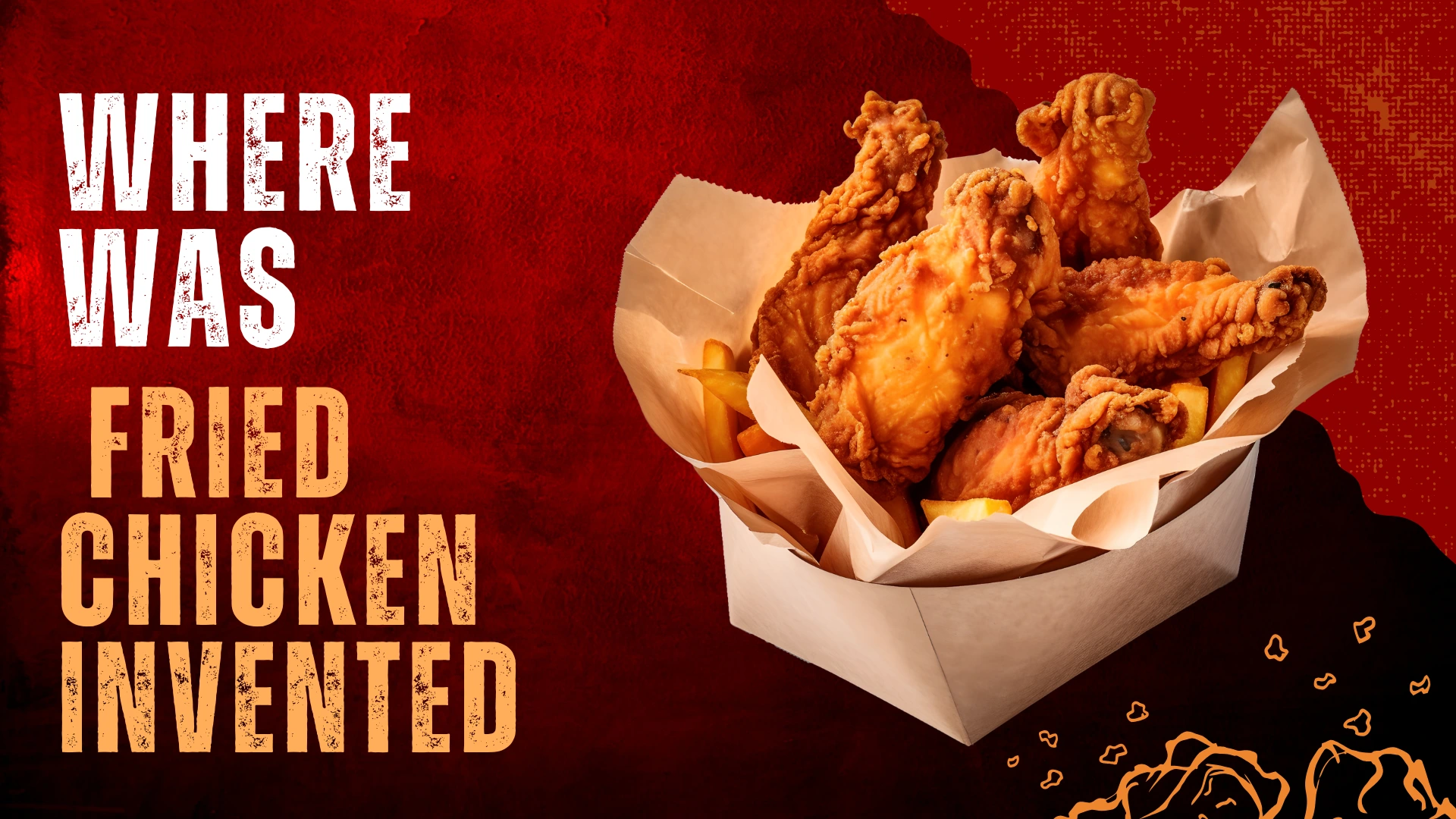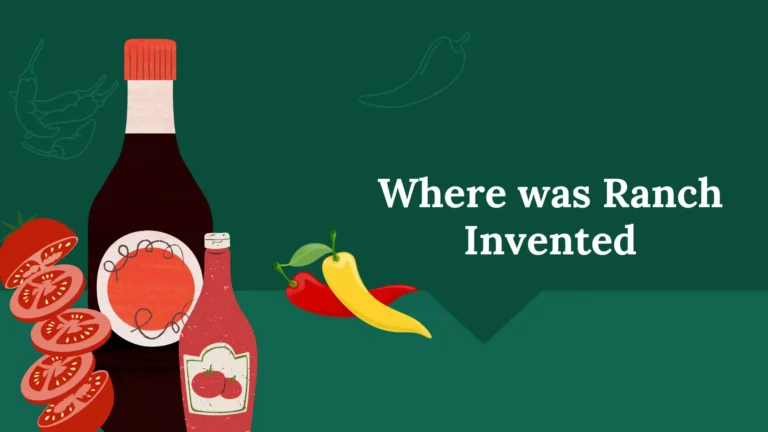Where was Fried Chicken Invented

Fried chicken is a universally loved dish, from family dinner tables to fast food chains across the world. Its crispy, golden-brown exterior and juicy interior make it a staple in many cultures. But where did fried chicken originate? To answer that question, we need to delve into its history and explore the different culinary traditions that contributed to its creation. This article traces the journey of fried chicken, starting from its ancient roots to its present-day global popularity.
The Roots of Fried Chicken
Early Beginnings in Ancient Times
The concept of frying food is as old as cooking itself. Evidence of frying techniques can be found in ancient civilizations, including Egypt and Mesopotamia. Although there’s no direct evidence of fried chicken in these early cultures, the method of frying meats and fish was well established. Ancient Egyptians, for example, were known to fry fish and other foods in oils, a technique that likely influenced later cooking methods.
The Scottish Influence
One of the most fascinating theories about the origins of fried chicken comes from Scotland. In the 16th century, Scots were preparing a dish called “fried whiting,” which involved coating fish in oatmeal and frying it in hot fat. This method of frying, which produced a crispy outer layer, may have been adapted to chicken once the bird became more widely available. The Scots were known for their frying skills, which were passed on to other culinary cultures as they traveled.
The West African Contribution
Perhaps the most significant influence on fried chicken came from the culinary traditions of West Africa. Many African cultures have long practiced frying meats, especially chicken, using a variety of spices and seasonings to enhance flavor. This method of frying chicken, often combined with a spicy rub or marinade, was likely brought to the Americas by enslaved Africans during the transatlantic slave trade. Their culinary expertise played a pivotal role in the development of what we know today as fried chicken, as they introduced new techniques and flavors to the dish.
Evolution in the American South
Fusion of Culinary Traditions
The American South, where fried chicken became a cultural symbol, benefited from a combination of culinary traditions. With the arrival of both European and African influences, a unique fusion of cooking styles emerged. The abundant supply of chickens, paired with the availability of fats like lard and bacon grease, created the perfect environment for frying chicken. This combination of European and African techniques resulted in a dish that was both delicious and easy to prepare, making it a favorite among Southern households.
African American Influence
African American cooks were instrumental in popularizing fried chicken in the United States. In the South, African Americans developed their own distinctive methods of preparing the dish, often seasoning the chicken with bold flavors and using buttermilk or flour to create a crispy crust. These techniques helped elevate fried chicken from a simple meal to a beloved dish, known for its flavor, texture, and cultural significance. Fried chicken became synonymous with Southern hospitality, frequently served at gatherings and celebrations as a symbol of comfort and community.
Global Proliferation
The Rise of Fast Food Chains
In the 20th century, fried chicken underwent a major transformation as fast food chains began to rise in popularity. The global success of Kentucky Fried Chicken (KFC), founded by Colonel Harland Sanders, played a key role in introducing fried chicken to the world. KFC’s rapid expansion and focus on consistency helped solidify fried chicken as a fast food favorite. The company’s famous recipe, with its secret blend of 11 herbs and spices, became a hallmark of global fast food culture, allowing fried chicken to transcend regional and cultural boundaries.
International Variations
Today, fried chicken has become a global phenomenon, with each country adding its unique twist to the dish. In Korea, for example, fried chicken is often double-fried, resulting in an extra crispy texture, and it is typically coated with spicy or sweet sauces. In Japan, karaage, a Japanese version of fried chicken, is known for its use of potato starch to create a crispy, light coating. Other countries, such as the Philippines and India, have embraced fried chicken and adapted it to their own flavor profiles, incorporating local spices and ingredients.
Conclusion
Fried chicken’s journey from ancient frying techniques to its global popularity is a testament to its versatility and appeal. Its roots can be traced back to a combination of European and African influences, each contributing unique techniques and flavors. In the American South, fried chicken became a cherished dish, symbolizing hospitality and comfort. Over the years, its popularity spread globally, with each culture adding its distinctive spin. Today, fried chicken is a beloved dish enjoyed by people from all corners of the world, evolving with time yet remaining true to its flavorful, crispy origins.
FAQs
Q1: When did fried chicken become popular in the United States?
Fried chicken became a staple in the American South in the 1800s. It was initially popularized as a dish of comfort and hospitality, often served at gatherings and celebrations.
Q2: How did fried chicken spread globally?
The rise of fast food chains, particularly KFC, played a significant role in popularizing fried chicken worldwide. Its mass production and international reach brought the dish to countless countries, where local variations developed.
Q3: What are some international variations of fried chicken?
In Korea, fried chicken is typically double-fried and coated in spicy or sweet sauces. In Japan, karaage features chicken marinated in soy sauce and coated in potato starch. Other countries, like the Philippines and India, have incorporated local spices to create their own versions of fried chicken.
Q4: Did African American cooks influence fried chicken recipes?
Yes, African American cooks were crucial in shaping the dish we know today as fried chicken. They introduced key techniques, such as seasoning the chicken with bold spices and using buttermilk or flour to create a crispy crust.
Q5: What is the Scottish connection to fried chicken?
The Scottish influence on fried chicken is thought to stem from a cooking method known as “fried whiting,” a dish where fish was coated in oatmeal and fried. This technique may have influenced the creation of fried chicken when the practice was adapted to poultry.





